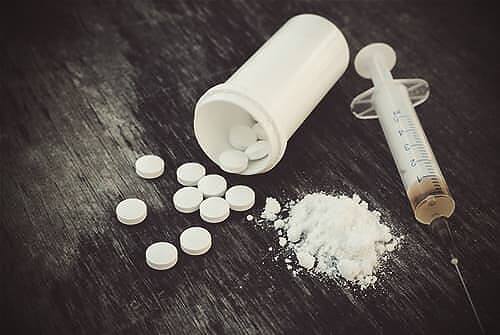How Long Does Heroin Show Up on A Blood Test?
Blood tests are uncommon ways to detect heroin in the body. This is because heroin’s half-life allows it to work through the blood in a relatively short amount of time.
In many cases, the heroin is worked out of the blood before 24 hours pass, and few drug tests are given that close to the use time. That said, trace amounts of heroin could still be in the blood for a day or so after that point, so it’s unwise to mix medications or use other drugs for a few days after using heroin.
How Long Does Heroin Show Up in Urine
How long does heroin last in urine? Roughly the same amount of time that it stays in the blood. This is why urine tests aren’t used as often in testing for heroin.
There might be a little extra time that heroin lasts in urine compared to blood. You can expect it to be detectable for about 48 hours, whereas blood gets heroin out a little quicker.
How Long Does Heroin Last in Hair?
Heroin is present in hair much longer than in the rest of the body. On average, heroin can be present in a person’s hair for around three months after use.
This is why hair testing is the most common way to detect heroin. If a person has been using heroin for a long time, however, they’re prone to have an extended period where the heroin could be detected in their hair.
How Long Does Heroin Last in Saliva?
Saliva tests are an effective way to test for heroin, and they’re quick, so there’s an incentive to use saliva tests when a person may have used them recently.
That said, saliva tests are only practical when a person has used heroin in the last day or so.
So, while heroin runs through the person’s body and mind pretty quickly compared to other drugs, it can linger around in certain areas. It’s important to note that heroin in your hair won’t produce any psychological or physical effects for you to deal with.
Having it present in your body can offer legal complications or different punishments depending on your circumstances. Further, taking the figures listed above with a grain of salt is essential.
Those numbers were approximations based on “average” people who use heroin. In reality, your tolerance, size, age, and health will all impact the rate at which heroin is eliminated from the body.
How Long Does Heroin Stay in Your Brain?
Heroin metabolizes into morphine and 6-acetyl morphine. Morphine’s half-life can be anywhere from 1 to 6 hours.
So, the answer is 1 to 6 hours multiplied by 5. That’s a vague answer, but it gives you a ballpark approximation of the time it takes for heroin to get out of your brain. Because of the fast half-life, heroin gets out of your system faster than it takes to get opiates out of your system in most cases.
Regarding the effect, heroin can be summed up in three stages. First, you might feel uneasy or nauseous for a minute or so. Then, you’ll experience a dopamine rush that causes a sense of euphoria.
That euphoria is the addictive part of heroin, and it’s the reason that it’s so difficult to stop. That lasts for thirty minutes or so, depending on the user. Finally, there are a couple of hours or more when the user is sleepy, dazed, and generally subdued by the drug.
When heroin is active in the system, it’s active in the brain. Most drugs take about five half-lives to work themselves out of the active process. The heroin half-life is difficult to judge because every person’s body handles it differently.
When we use heroin, it is altered into different substances within the body.

